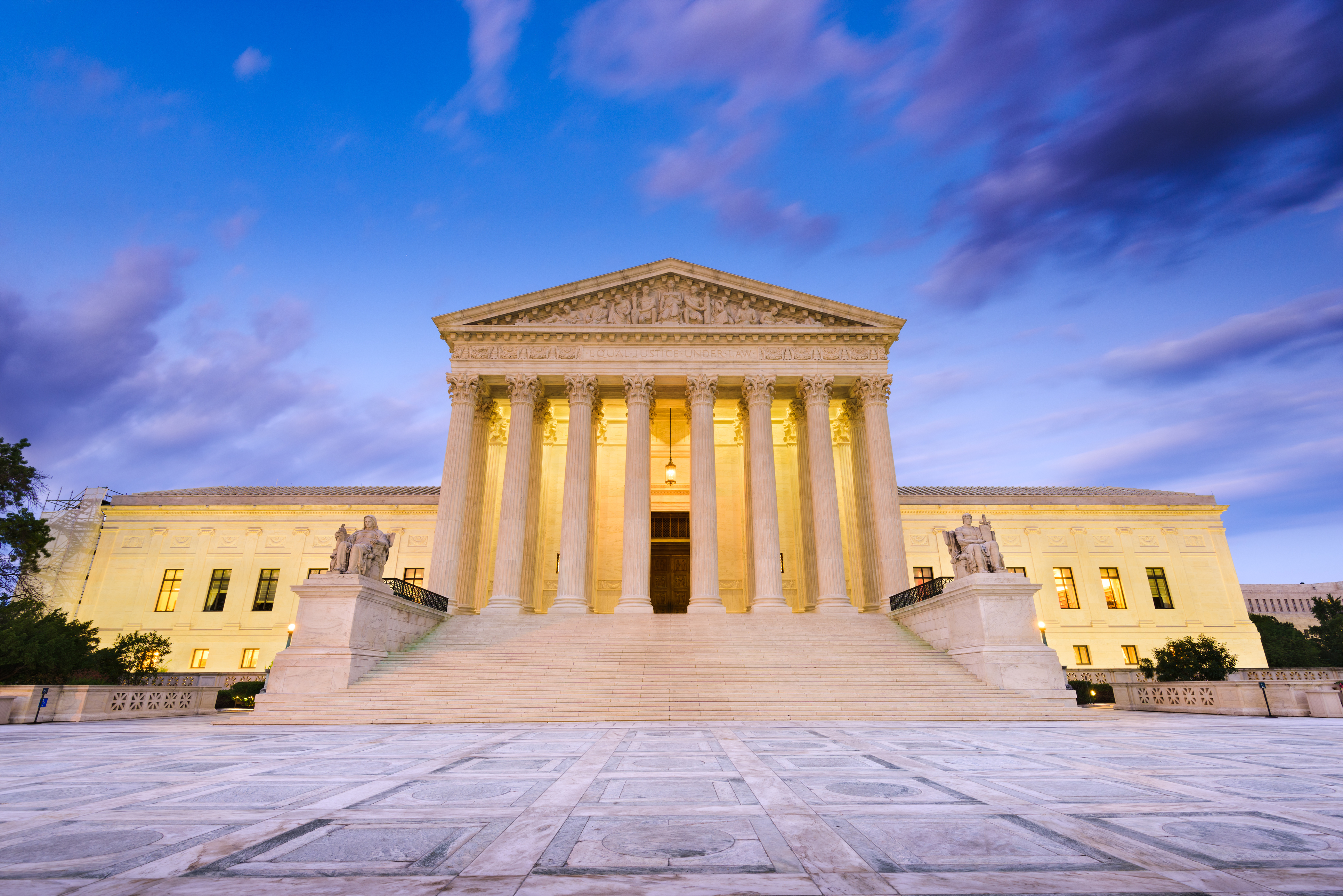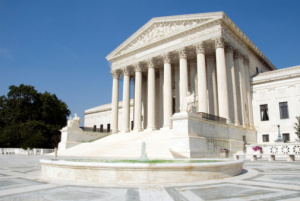
Legal scholars and practitioners analyze the Court’s most important regulatory decisions of this past term.
The U.S. Supreme Court’s recently concluded term included a number of significant cases involving regulatory issues. In addition to resolving the important legal questions in these cases, the Court found itself at the center of the nation’s attention following the nomination of now-Justice Neil Gorsuch.
The death of late Justice Antonin Scalia last term created uncertainty for Court-watchers and may well have affected the outcome in a number of key cases—including United States v. Texas, a 4–4 decision about former President Obama’s immigration deportation policy, and Friedrichs v. California Teachers Association, another 4–4 decision that addressed whether public employees could be forced to pay union dues. Only in the final months of the 2016–2017 term did Justice Gorsuch assume his position on the Court and start to join in opinions with Justices Clarence Thomas and Samuel Alito.
In this series, The Regulatory Review presents eight essays by leading legal scholars and practitioners, as well as members of The Regulatory Review staff, commenting on the Court’s most significant regulatory decisions from this past term. The series features a total of eight essays, with a new essay running each day over the course of two weeks.
The series begins with an essay by Professor David Zaring of The Wharton School discussing the implications of the Court’s decision in National Labor Relations Board v. Southwest General, Inc., a case in which the Court broadly interpreted a ban on certain executive branch appointees from serving in an acting capacity during the pendency of their nomination.
In another essay, Professor Lisa P. Ramsey of the University of San Diego School of Law analyzes Matal v. Tam, a closely-watched case in which the Court struck down as a violation of the First Amendment a provision of federal trademark law which had prohibited the registration of potentially offensive trademarks. In his essay, Professor Daniel P. Tokaji of The Ohio State University Moritz College of Law assesses two cases from this past term in which the Court imposed limits on states’ ability to rely on racial targets during re-districting.
Education attorney Lori Fox’s essay analyzes the Court’s decision in Endrew F. v. Douglas County School District, in which the Court unanimously determined that the Individuals with Disabilities Education Act requires public schools to offer support to students with special needs. In another essay, University of Pennsylvania Associate General Counsel Sean Burke evaluates the Court’s decision in Kindred Nursing Centers L.P. v. Clark to strike down a Kentucky judicial rule of interpretation that operated to disfavor certain agreements requiring parties to arbitrate their disputes.
Constraining the President’s Appointment Power
July 24, 2017 | David Zaring, The Wharton School
The Supreme Court’s holding in National Labor Relations Board v. Southwest General, Inc. makes policy control over the executive branch a little more difficult for the President, but, as usual, it shies away from dramatic substantive or remedial impact. Southwest General was a statutory, rather than constitutional, separation of powers case. The problem that led to the lawsuit lies in what to do about Senate confirmable positions in the executive branch that are vacant.
The First Amendment Protects Offensive Trademarks
July 25, 2017 | Lisa P. Ramsey, University of San Diego School of Law
In Matal v. Tam, the Supreme Court held that the disparagement clause of the federal trademark law, known as the Lanham Act, violates the Free Speech Clause of the First Amendment. Tam arose out of the U.S. Patent and Trademark Office’s rejection of Simon Tam’s application to register “The Slants” as a mark for the entertainment services of his rock band. In Tam, the Justices unanimously agreed that the disparagement clause violates the Constitution because it targets derogatory expression with an intent to discourage its use.
Equal Footing as Equal Protection
July 26, 2017 | Sean Burke, University of Pennsylvania
In Kindred Nursing Centers L.P. v. Clark, the Supreme Court held that Kentucky’s “clear statement rule” violated the Federal Arbitration Act, which requires that arbitration agreements be placed on the “same footing as other contracts.” Kentucky’s rule stated that even though a power of attorney is sufficient to allow the agent to make ordinary contracts on behalf of the principal, execution of an agreement that waives a right guaranteed by the Kentucky Constitution required an express statement granting the power of attorney that authority.
New York Law Regulates Business Owners’ Speech
July 27, 2017 | Jane Komsky, The Regulatory Review
A New York law provides that sellers may not “impose a surcharge” on credit card users who choose to “use a credit card in lieu of payment by cash, check, or similar means.” In Expressions Hair Design v. Schneiderman, five New York business owners challenged this law, arguing that it violates their First Amendment right to freely communicate prices. The Court agreed, holding that because the law does not regulate the actual prices charged, it effectively regulates only how owners communicate their prices.
Restricting Race-Conscious Redistricting
July 31, 2017 | Daniel Tokaji, The Ohio State University Moritz College of Law
After a long hiatus, racial gerrymandering is back in the spotlight. Two opinions issued this past term by the Supreme Court, Bethune-Hill v. Virginia State Board of Elections and Cooper v. Harris, clarify the limits on states’ consideration of race when drawing districts. Taken together, they substantially limit Republican elected officials’ ability to use the Voting Rights Act as a pretext for partisan gerrymandering. They also make it harder to justify the intentional creation of districts with a predetermined percentage of racial minorities.
Supreme Court Raises the Bar for Students with Disabilities
August 1, 2017 | Lori Fox, Attorney at Law
Before the Individuals with Disabilities Education Act’s passage in 1975, children with special needs were often neglected by school systems. After its passage, school systems took steps to improve conditions, but courts still have intervened in response to concerns that some schools must take still further steps. The Supreme Court’s decision in Endrew F. v. Douglas County School District raised the bar higher for courts in jurisdictions that had, in the past, permitted schools to set only the most limited goals for the most challenged children.
Constraining the SEC’s Enforcement Options
August 2, 2017 | Justin S. Daniel, The Regulatory Review
In Kokesh v. SEC, the Supreme Court considered whether the U.S. Securities and Exchange Commission’s (SEC) pursuit of “disgorgement”—a type of repayment in which the defendant is required to turn over the gains obtained from violating the securities laws—is properly understood as a “penalty” within the meaning of a five-year statute of limitations on imposition of penalties by the SEC. The Supreme Court unanimously held that SEC disgorgement does constitute a penalty and, as a result, that the five-year statute of limitations applies.
Supreme Court Clarifies Test for Evaluating Useful Articles
August 3, 2017 | Leah Wong, The Regulatory Review
Star Athletica, LLC v. Varsity Brands, Inc., involved a legal match-up between two cheerleader uniform companies and resulted in the Court granting broad copyright protection for industrial designs. Copyright protection is unavailable for “useful articles,” meaning objects with a utilitarian function such as lamps or clothing items. In Star Athletica, industry titan Varsity Brands and market new-comer Star Athletica disagreed whether the actual designs on a clothing item constituted a protectable work of art, or merely a common design that lacks copyright protection.



